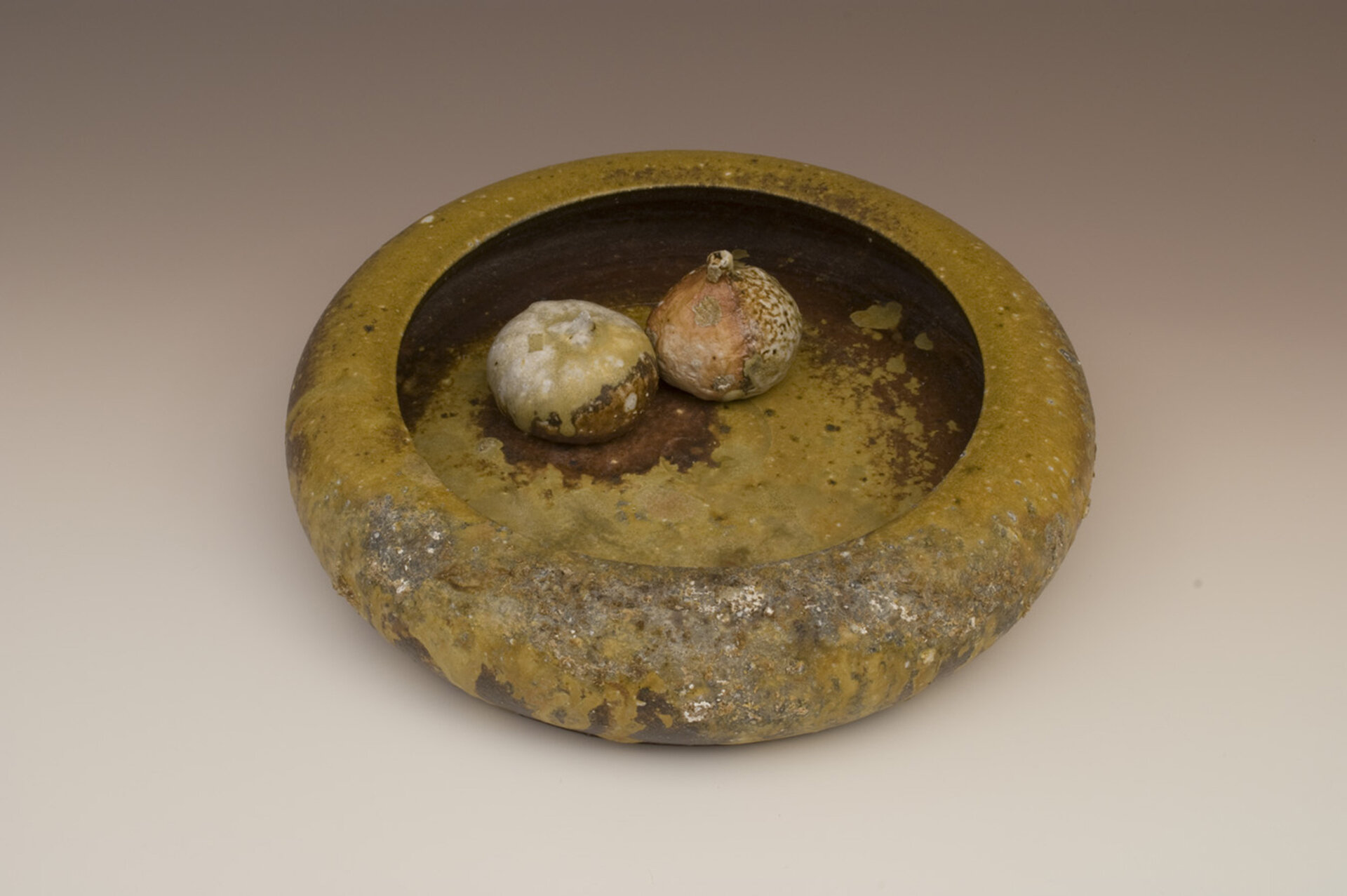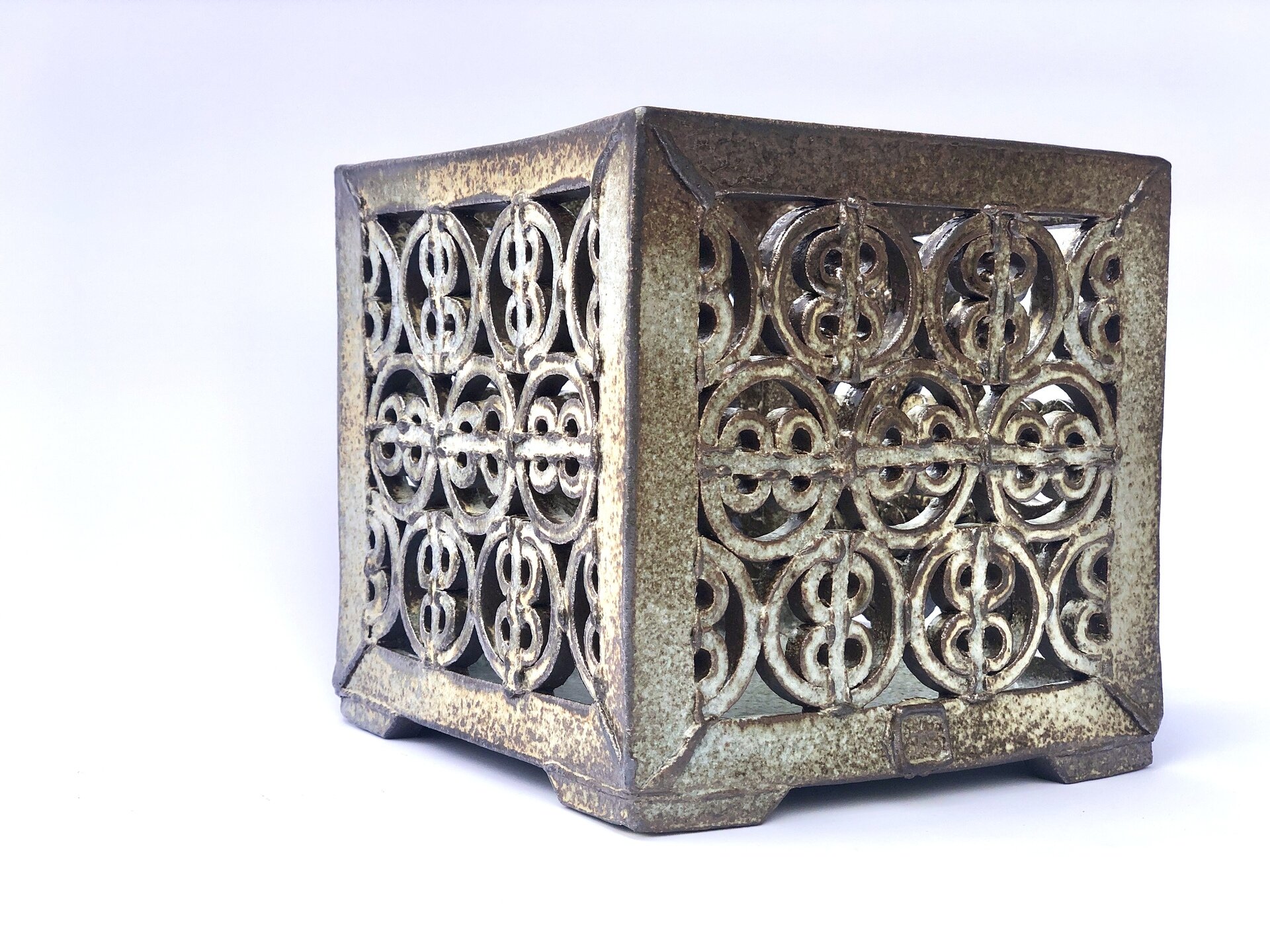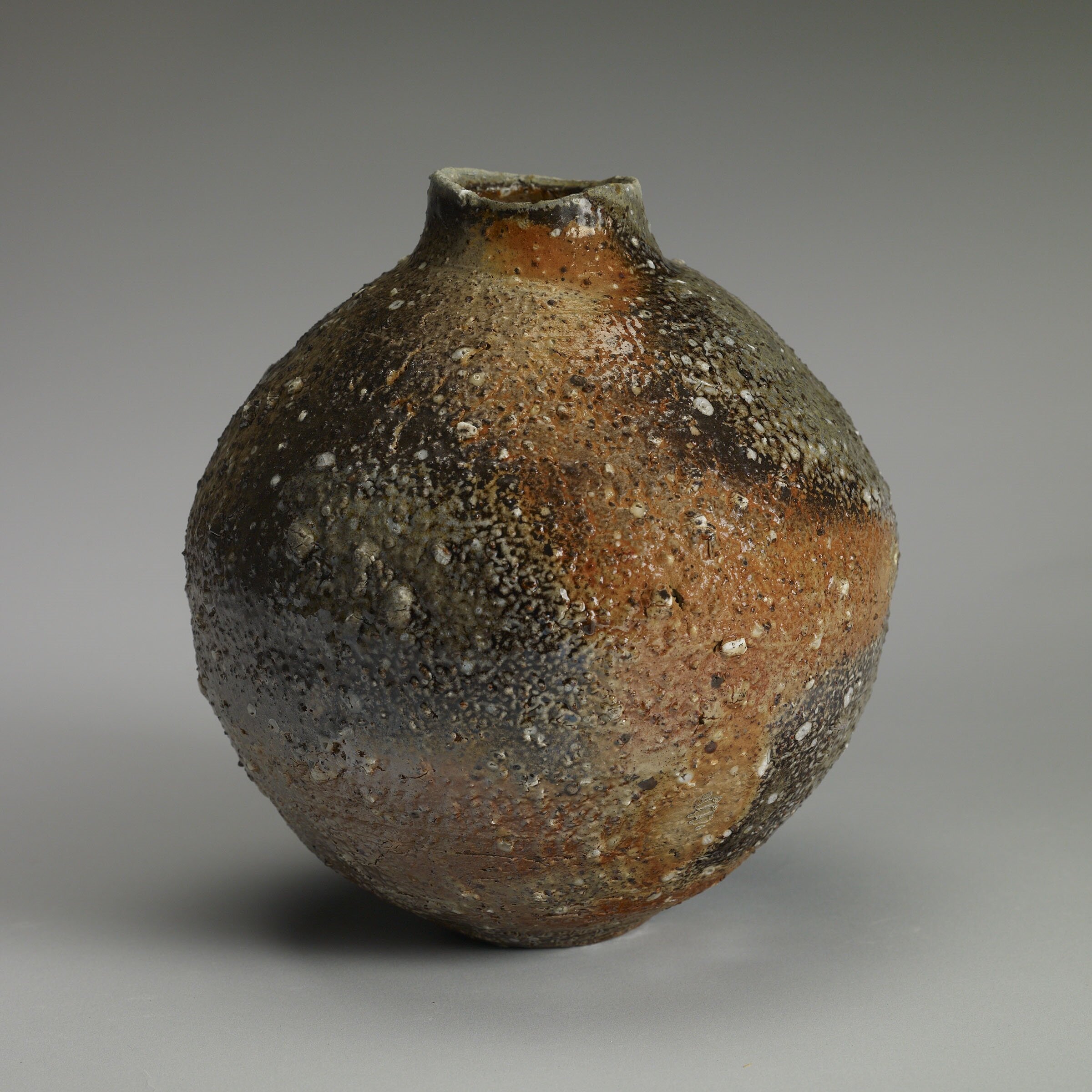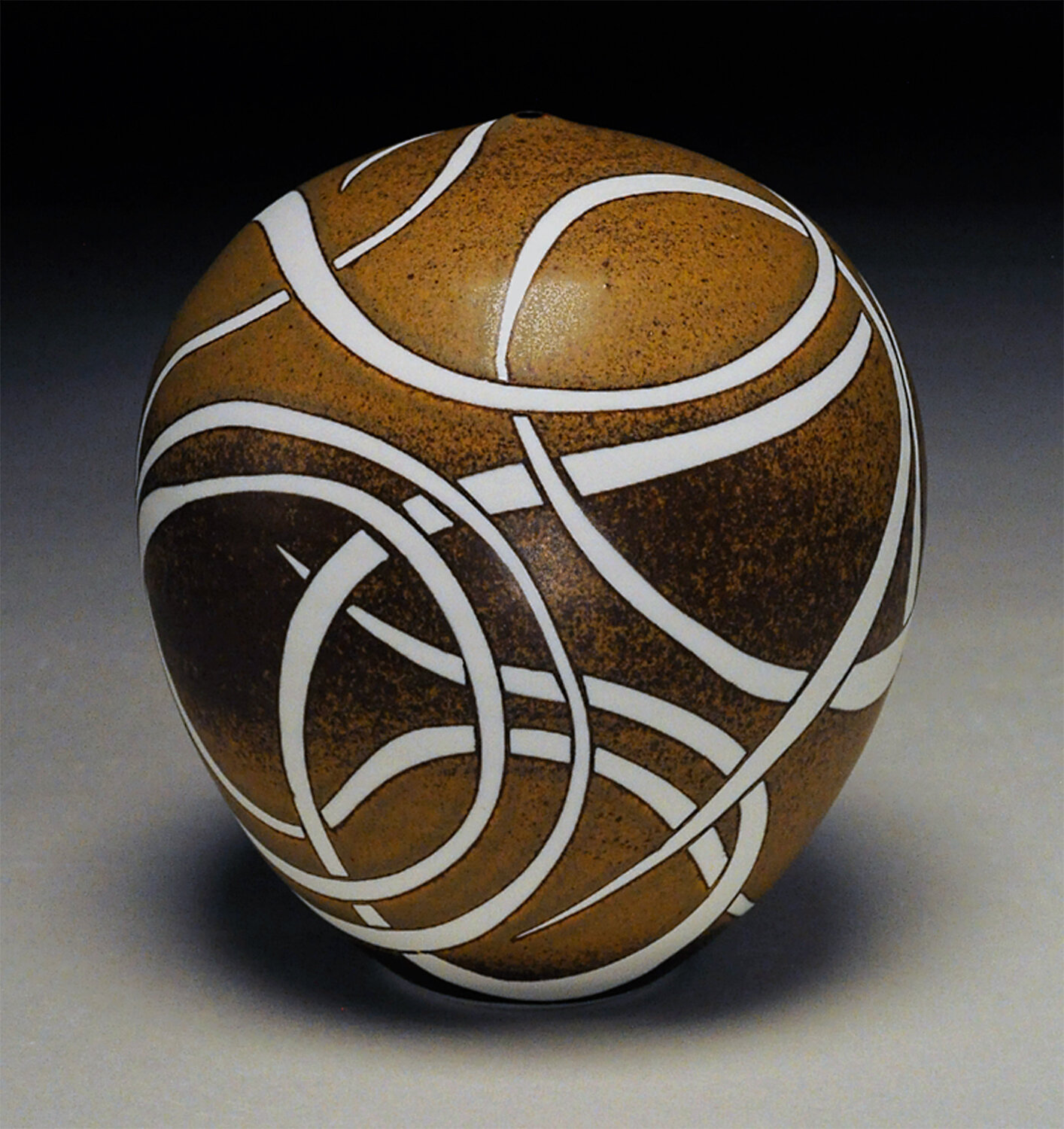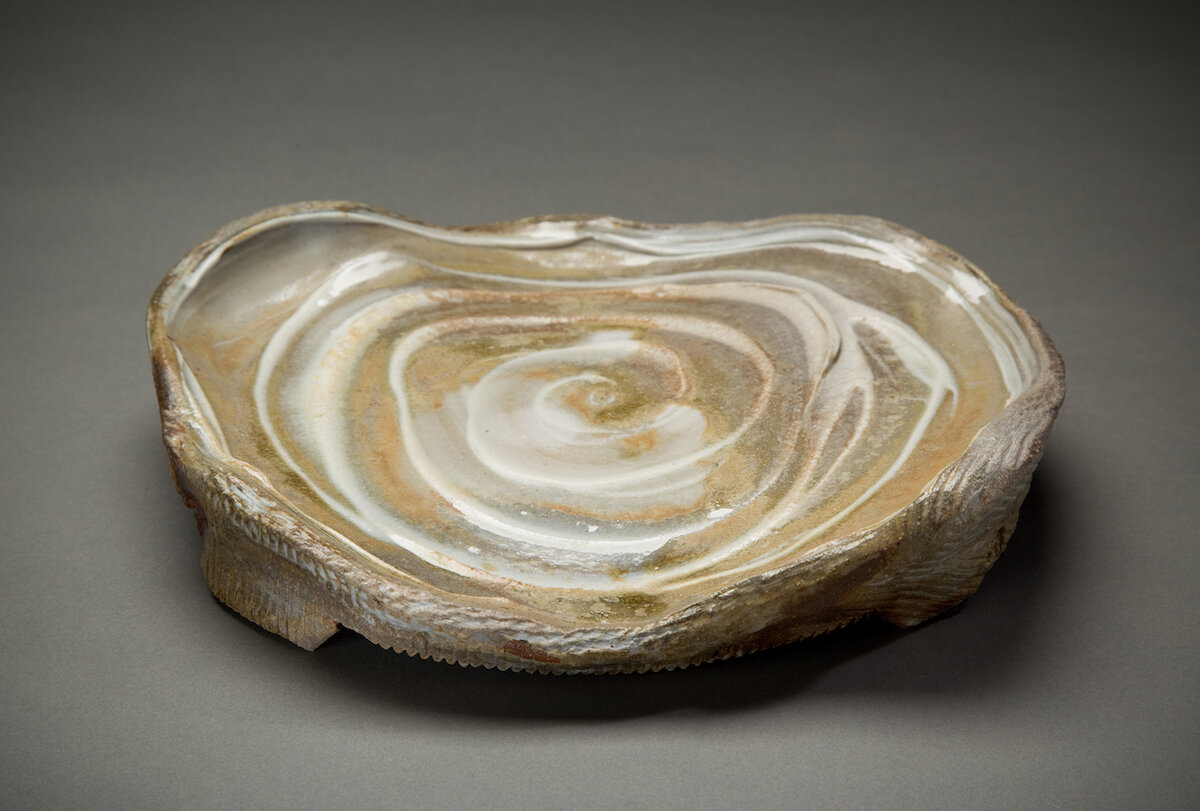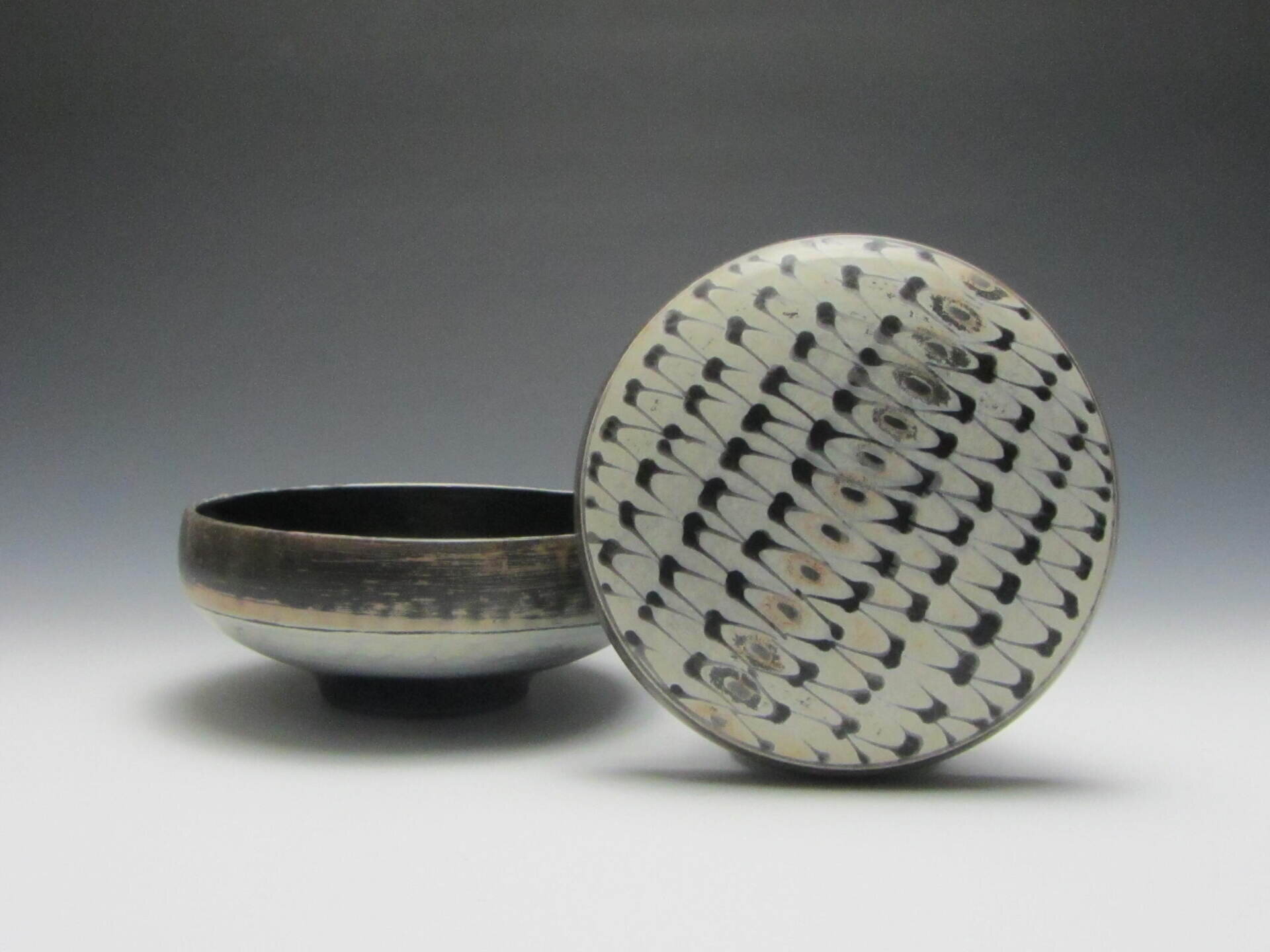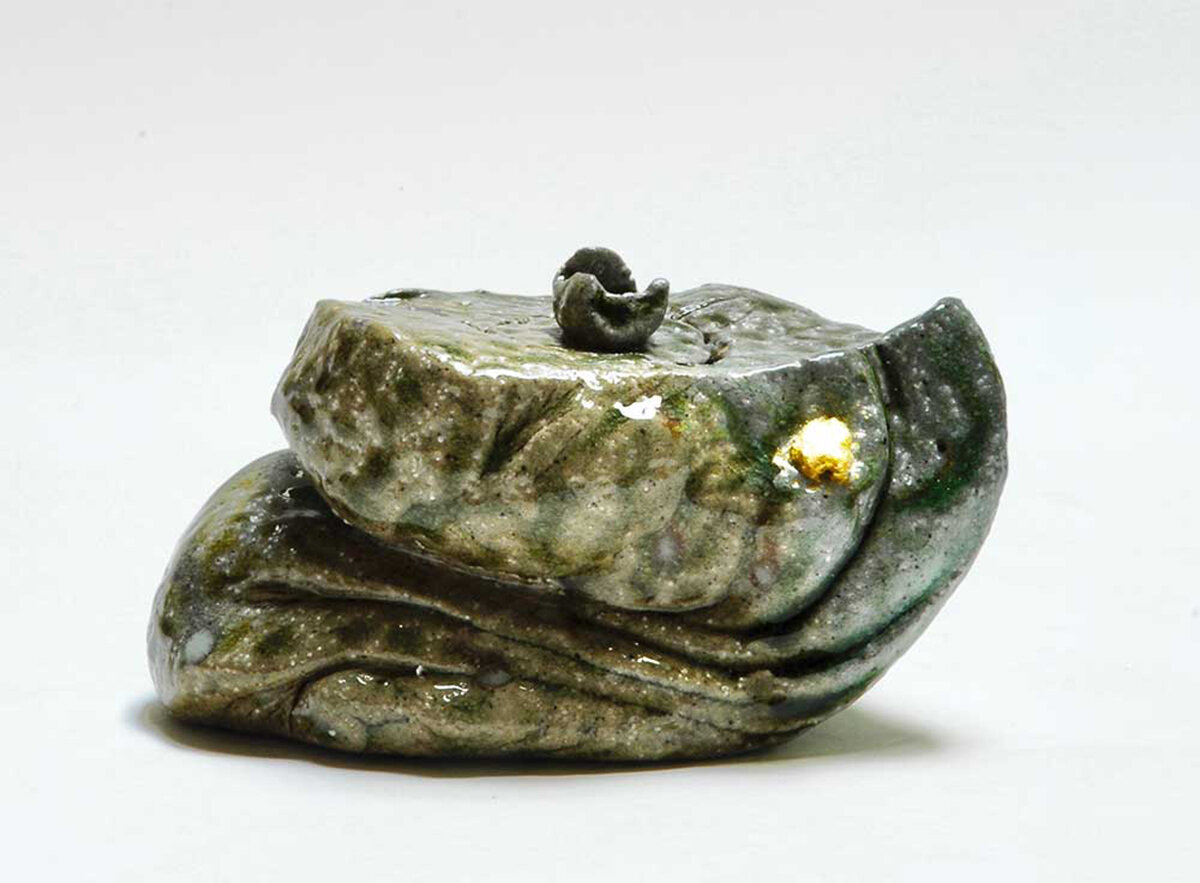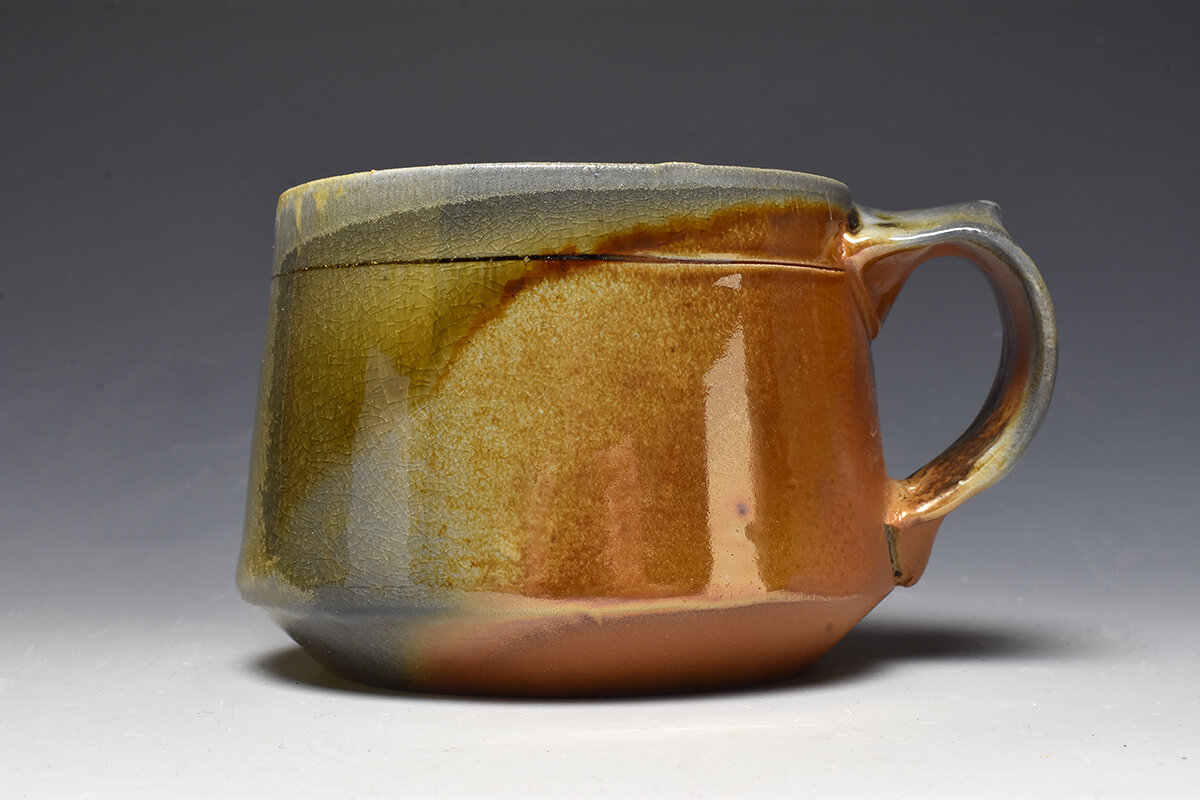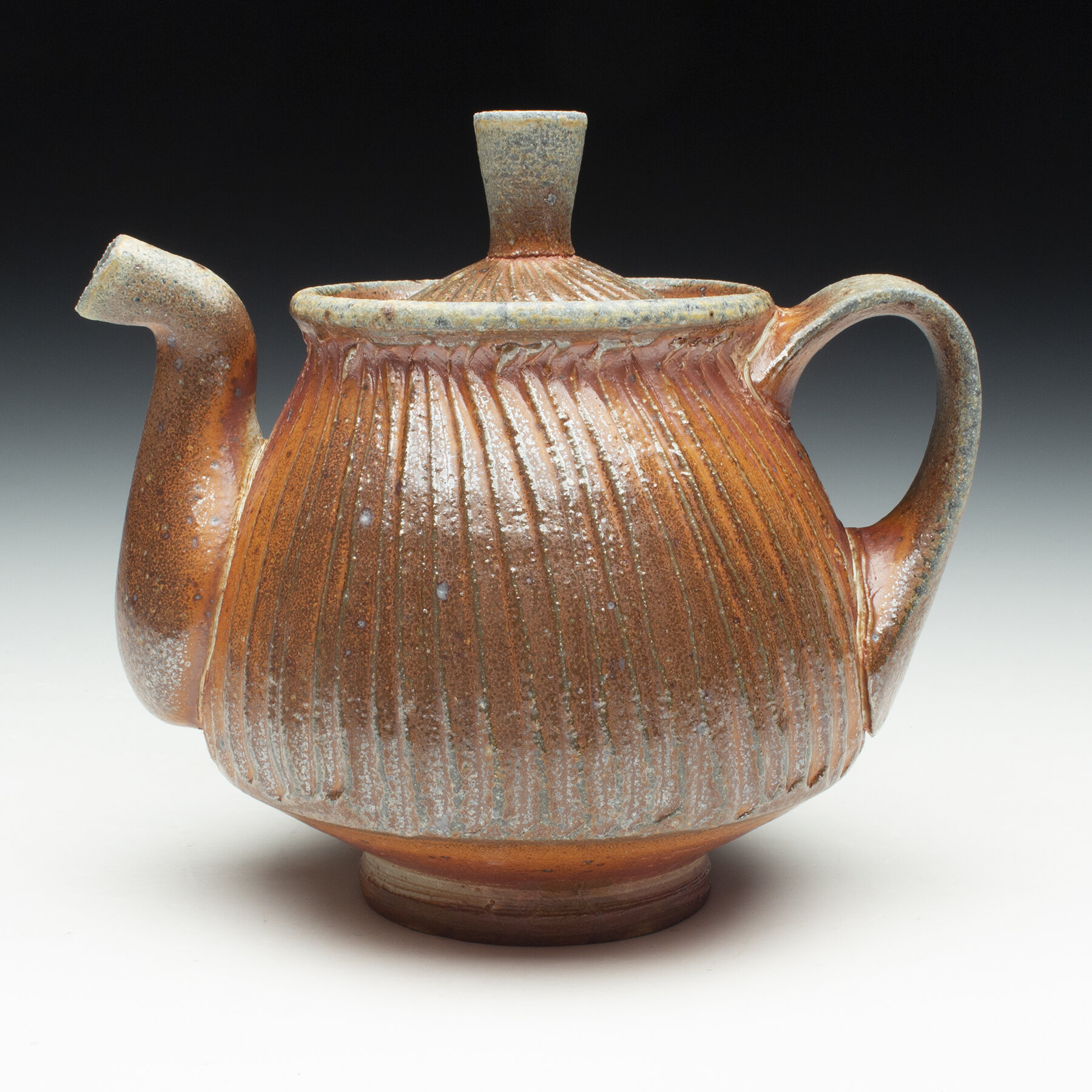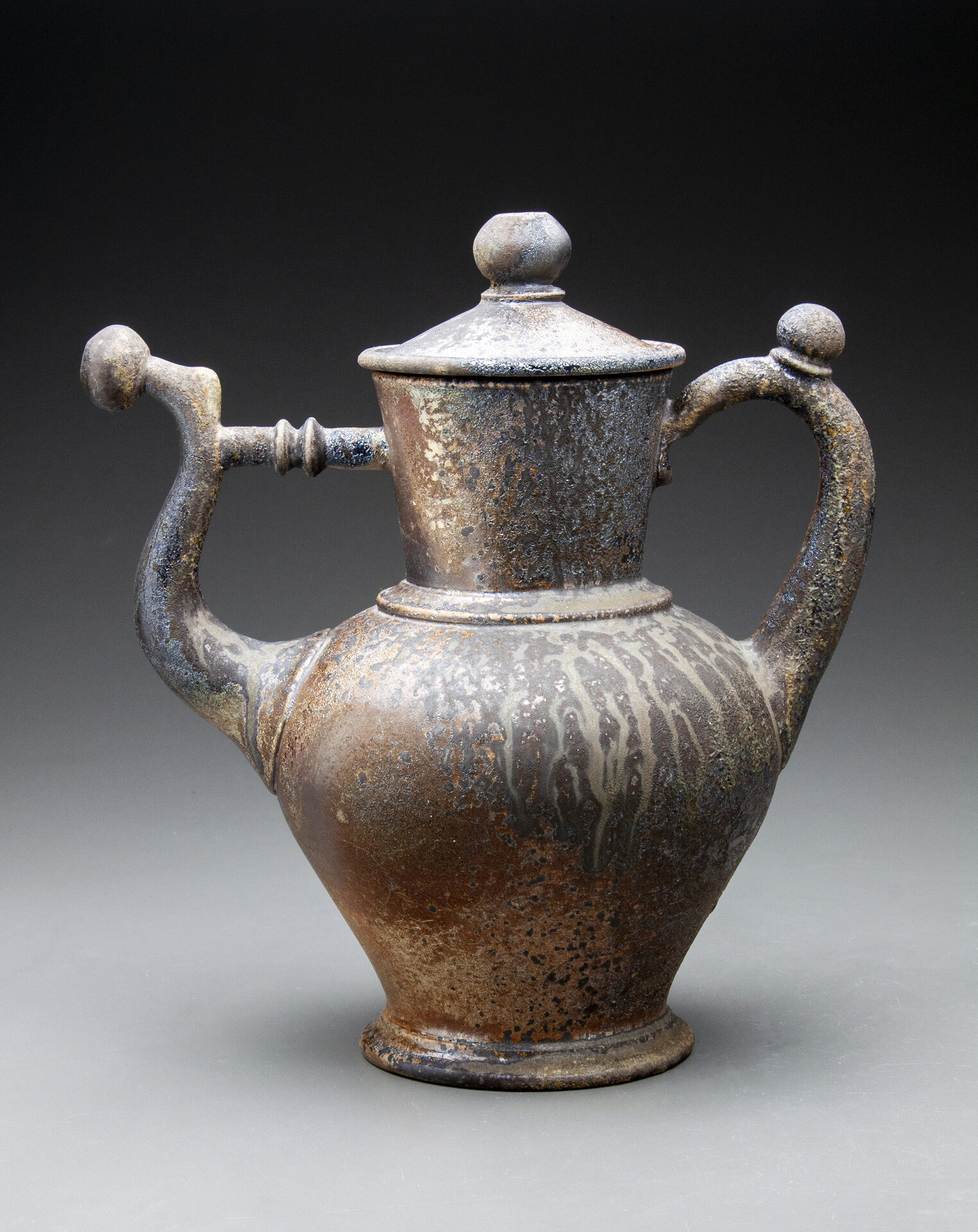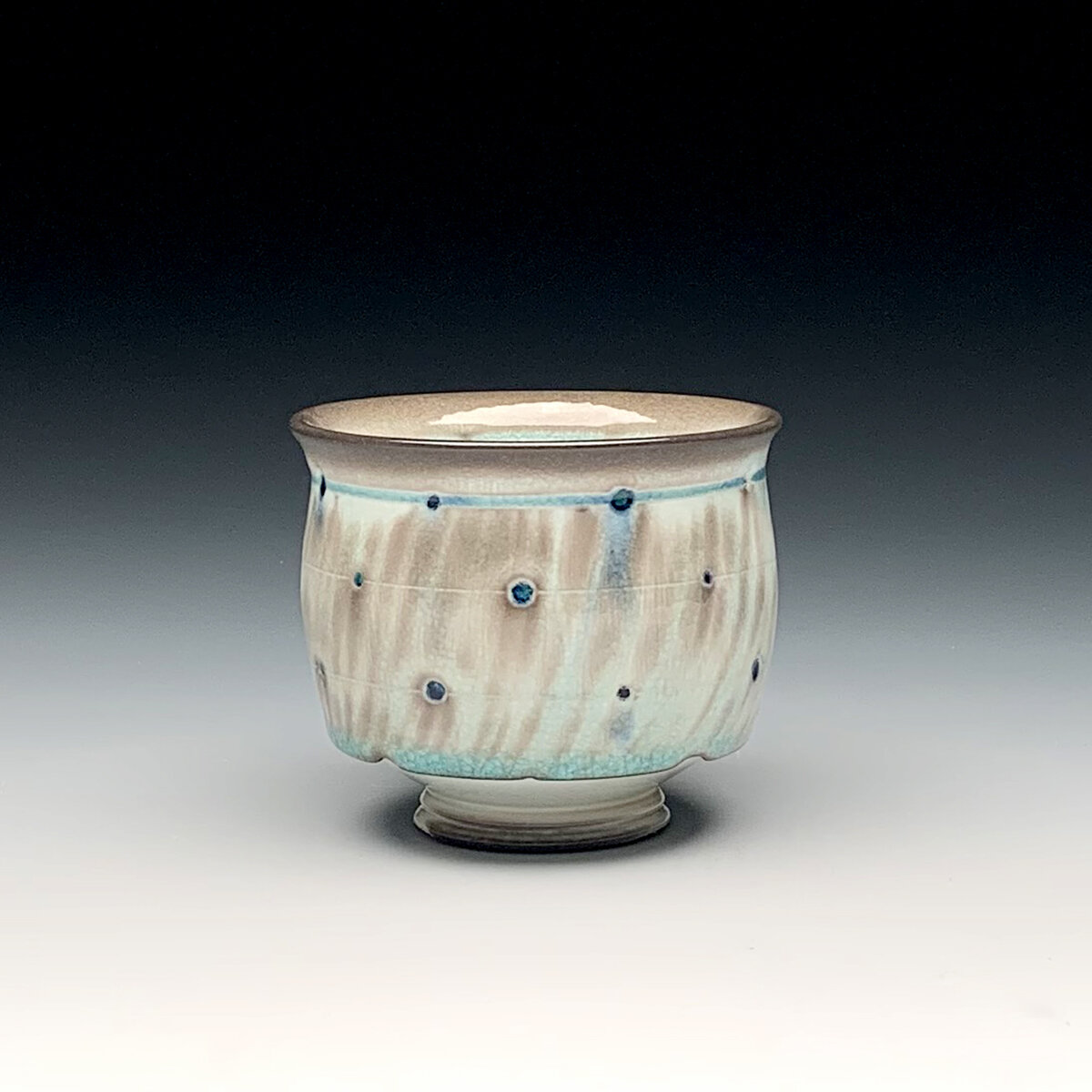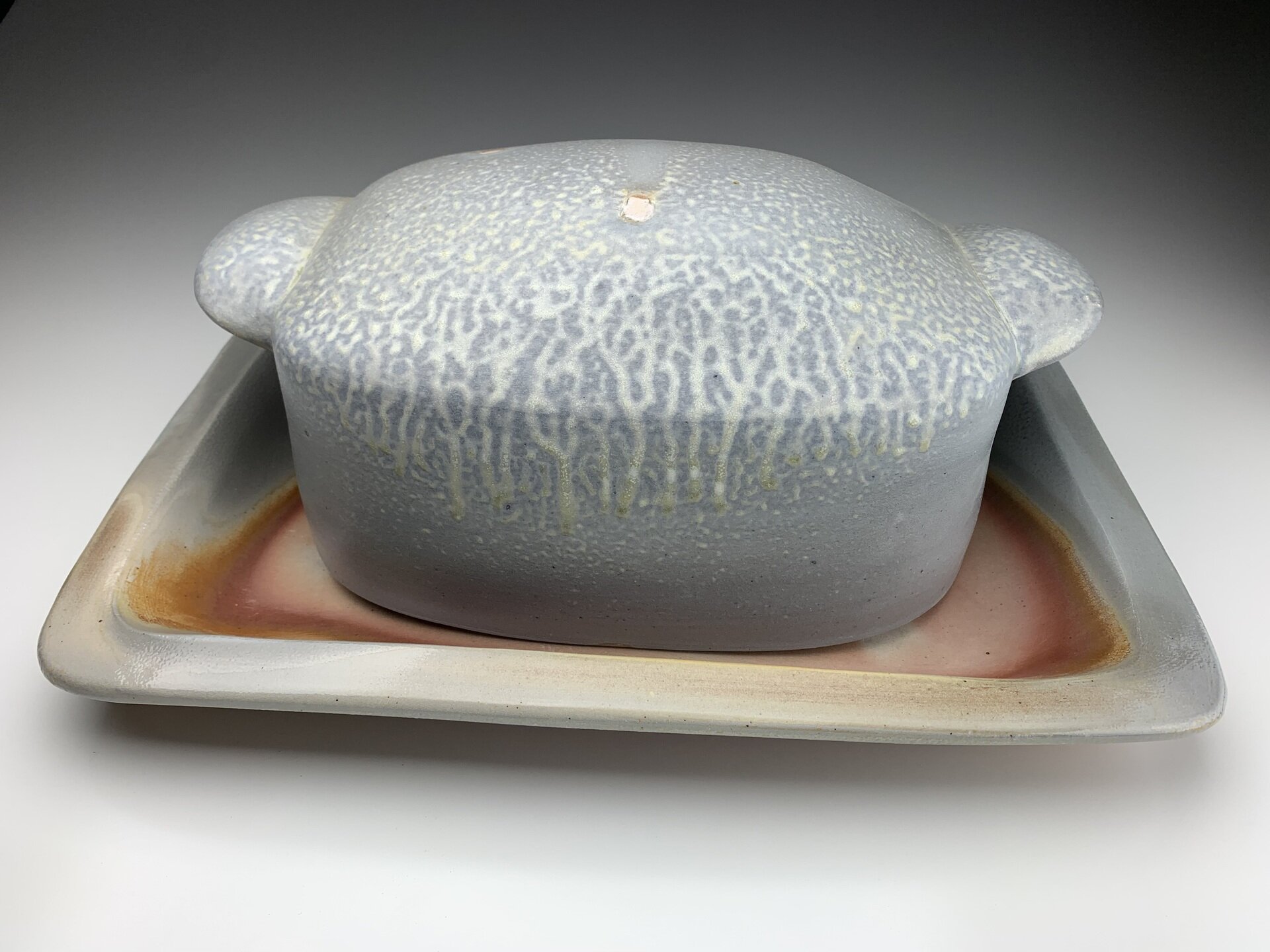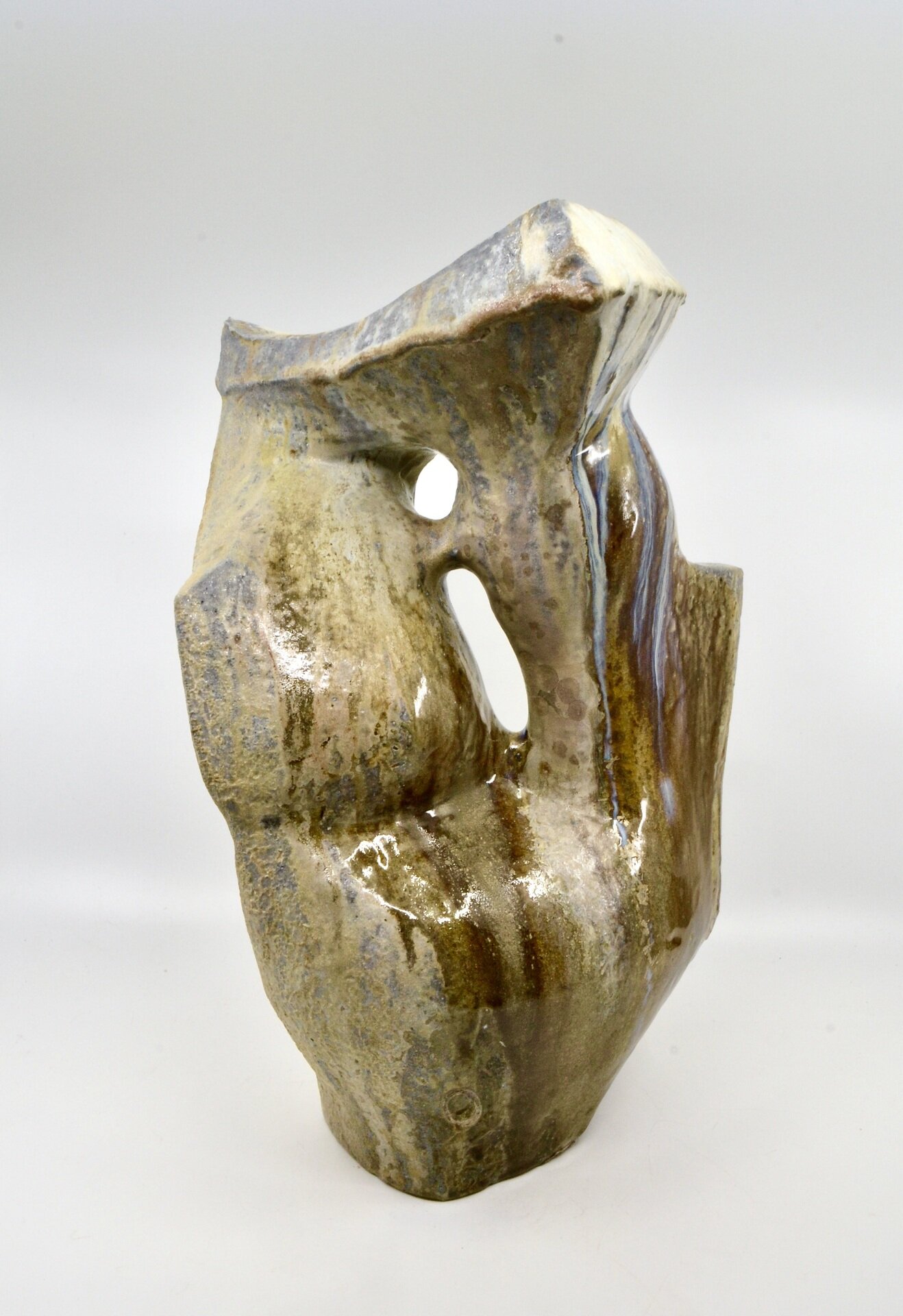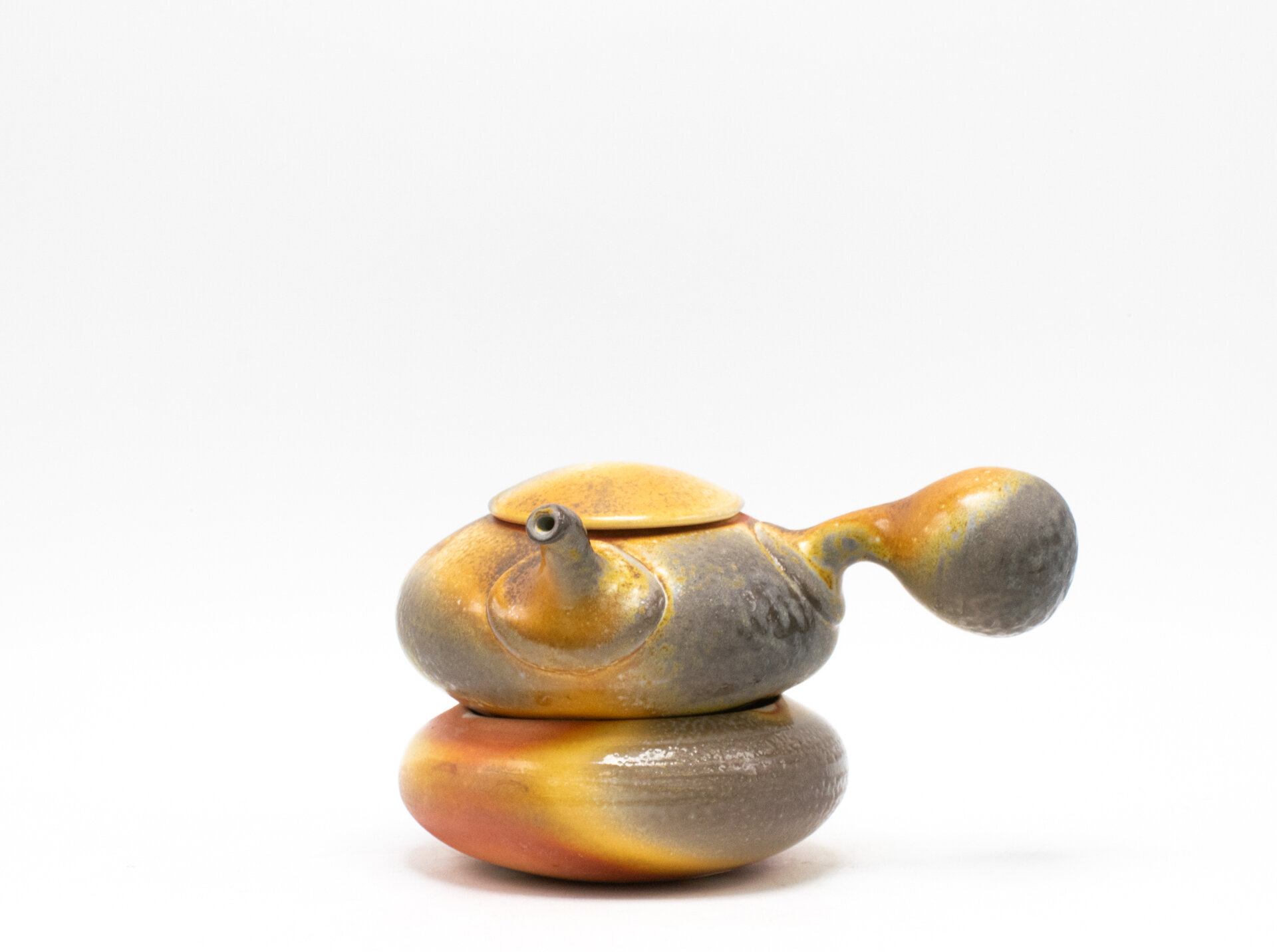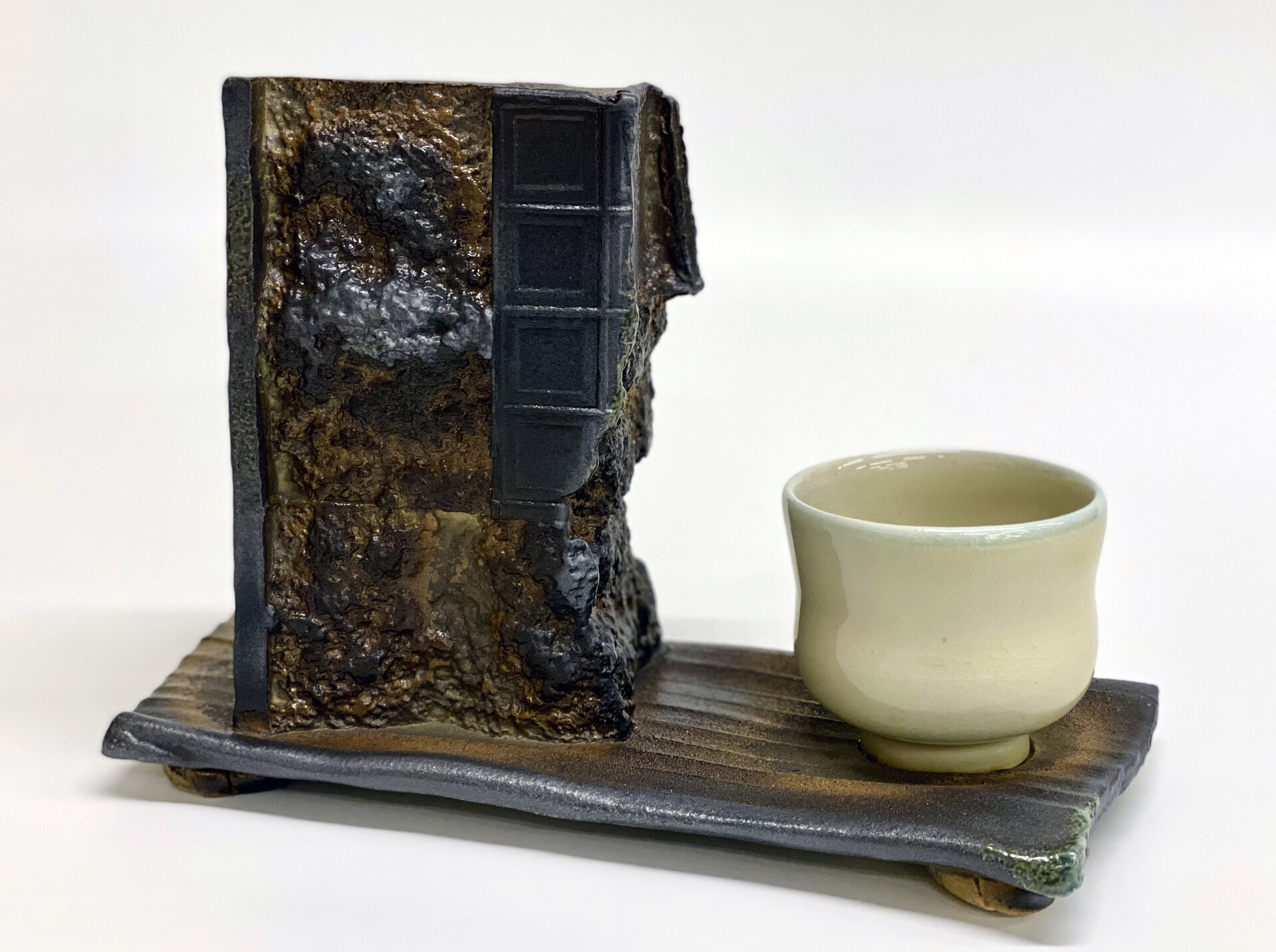Saratoga Clay Arts Center presents PLAYING WITH FIRE: Altered Atmospheres, a national juried exhibition of 68 functional and decorative works by 59 clay artists who play with fire. Juried by renown Massachusetts-based potter, Mark Shapiro, the selected works have been plucked from altered atmospheres – those changed by wood, smoke, salt or the like. The exhibition opens on Saturday, March 13th online and in person, with an opening reception from 5-7pm, and runs through April 24, 2021. A Juror’s Choice Prize and a Director’s Choice Prize will be selected. The reception will be held outdoors, and individuals will be let into the gallery in small groups. Masks required to enter.
Mark Shapiro will also be presenting a 90 minute virtual demonstration workshop The Thing About Cups on March 13th at 12pm EST in conjunction with the exhibition in partnership with Project Art. Learn more.
On Thursday, March 25th at 2pm EST we will host PLAYING WITH FIRE: A Dialogue with Juror Mark Shapiro. This will be a FREE lively talk about the lure of atmospheric firing and a virtual hands-on tour of the national juried exhibition with the juror himself. Mark, SCAC Director Jill Fishon-Kovachick and SCAC Program Consultant Leigh Taylor Mickelson will talk together about why potters notoriously love playing with fire and why clay lovers keep buying their pots. We will also reveal the winners of the Juror’s Choice and Director’s Choice awards and hear why those pots stood out. Lastly, we will take questions and comments from our audience to continue the dialogue. Learn more.
Juror and Massachusetts potter Mark Shapiro writes, “Artists’ relationship with their materials is at the heart of the creative process. Regardless of the discipline—be it based in installation or social practice, old-fashioned easel painting or any of the material-based crafts—how we relate to the materials from which we make things is fundamental to the nature of the work.
“Potters have lots of materials to choose from. Clays and firing methods present an astonishing range of visual and tactile possibilities, from porcelain to stoneware to earthenware and even paper-clay and from electric to gas to wood firings. And that doesn’t even get into kiln design and packing and firing routines. While potters render their imaginations in form, they always start with clay and end with fire.
“Ceramics is an art of speculation: the clay in the raw state little resembles what we see upon the unloading of the kiln. We enter the kiln twice—loading and unloading—but not, alas, when it is sealed and hot. Just as we cannot breathe underwater, the interior of a glowing kiln precludes our particular biology—its extremity in fact precludes all biological life. One of clay’s unique and seductive qualities is its plasticity, its unmediated responsiveness to touch. We revel in the immediacy and variety of its record of our grip, our tools; every inflection of pressure applied on the state of its hardness—from soup to leather—is a celebration of the possible. But while the kiln is performing its hardening alchemy, we are barred from such play. The die is cast: we cannot enter to alter shape or surface. The kiln’s transformative logic has the last say.
“But the extent to which firing demands and engages the potter varies broadly, depending on type of kiln, its design, how it is loaded, fired, and even cooled. The continuum from computer-programmed electric top-loaders to gas kilns (in their heating and cooling and reduction cycles), and the many configurations of wood kilns from small “fast-fire” to subway-car length anagamas that fire for a week or more, demand increasing preparation and commitment. Before pots even go into the kiln, there is wood to split, stack, and season, as well as teams of stokers to recruit and organize.
“In physically building the fire and manipulating it as it unfolds—adjusting burners and dampers, varying stoking rhythms and wood types, and playing with the atmosphere—we come closer to the impossible: we stand at the mouth of the forbidden chamber of the glowing kiln and actively alter the surface of our hardening wares. Physically engaging the firing at its source (the burner and stoke ports that make the heat), at the primary and secondary air vents that mix the combustion, and at its exit (manipulating passive and active dampers that control the flow), not to mention introducing sodium or building charcoal, we become palpably connected to the unsurvivable interior of the kiln. Our fiddling, stoking, adjusting, and throwing stuff into the fire touches something transgressive, elemental, and essential. These firings perhaps enact the universal myth—Promethean and global—of stealing fire from the gods. We potters are really trying to get away with something.”
Participating artists include: Hadi Abbas, Clarice Allgood, Christopher Archer, Jennifer Azzariti, Ian Bassett, Meg Beaudoin, Casey Beck, Nicholas , Bernard, Irina Bondarenko, Joel Brown, Shannon Brownlee, Lisa Caruso, Victoria Davis, Julie Devers, John Dorsey, Ruth Douzinas, Jessica Dubin, Rostislav Eismont, Katie Francis, Barbara Frey, Teresa Frisch, Martie Geiger-Ho, Dennis Gerwin, Seth Green, Ian Hazard-Bill, Emma Louise Kaye, Patty Kochaver, Jordan Kramer, Harrison Levenstein, Brandon Lipe, Daryn Lowman, Hideo Mabuchi, Gail McCarthy, Will McComb, Daryl McCracken, Andrew Mcintyre, Daniel Molyneux, Judith Motzkin, Carey Nathanson, Shawn O'Connor, Jennifer Owen, Chuck Pate, Don Ridley, Stephen Robison, Danielle Ruggiero, Amedeo Salamoni, Andrew Sartorius, Margaret Seidenberg-Ellis, Henry Sheets, Sonia Simoun, Andrew Smith, Hunter Smith, David Stevens, Alex Thomure, Will Van Dyke, Michele Vento, Lynn Anne Verbeck, Christopher Watt, and Morasha Winokur.
Mark Shapiro is a potter in Western Massachusetts. He is a frequent workshop leader, lecturer, curator, panelist, and writer, and is mentor to more than half a dozen apprentices who have trained at his Stonepool Pottery. His work is in many public collections, including the Smithsonian, Mint, Newark, Everson museums and the Chipstone Foundation. His work was featured in the World Ceramics Biennial in Icheon, Korea. His interviews of Karen Karnes, Michael Simon, Paulus Berensohn, and Sergei Isupov are in the Smithsonian Archives of American Art and he edited A Chosen Path: The Ceramic Art of Karen Karnes (UNC Press 2010). He is on the advisory board of Ceramics Monthly and is a contributing editor to Studio Potter magazine. He is a founding member of POW! (Pots on Wheels!) and heads up the Apprenticelines Project, which seeks to promote and expand apprenticeship. In 2018–19 he was a Smithsonian Artist Residency Fellow studying the Remensnyder Collection at the National Museum of American History. Mark has sought to bridge the gap between contemporary studio potters and historical researchers, collectors, curators, and collectors.
is a potter in Western Massachusetts. He is a frequent workshop leader, lecturer, curator, panelist, and writer, and is mentor to more than half a dozen apprentices who have trained at his Stonepool Pottery. His work is in many public collections, including the Smithsonian, Mint, Newark, Everson museums and the Chipstone Foundation. His work was featured in the World Ceramics Biennial in Icheon, Korea. His interviews of Karen Karnes, Michael Simon, Paulus Berensohn, and Sergei Isupov are in the Smithsonian Archives of American Art and he edited A Chosen Path: The Ceramic Art of Karen Karnes (UNC Press 2010). He is on the advisory board of Ceramics Monthly and is a contributing editor to Studio Potter magazine. He is a founding member of POW! (Pots on Wheels!) and heads up the Apprenticelines Project, which seeks to promote and expand apprenticeship. In 2018–19 he was a Smithsonian Artist Residency Fellow studying the Remensnyder Collection at the National Museum of American History. Mark has sought to bridge the gap between contemporary studio potters and historical researchers, collectors, curators, and collectors.
Salt Fired Cups by Mark Shapiro, Juror



